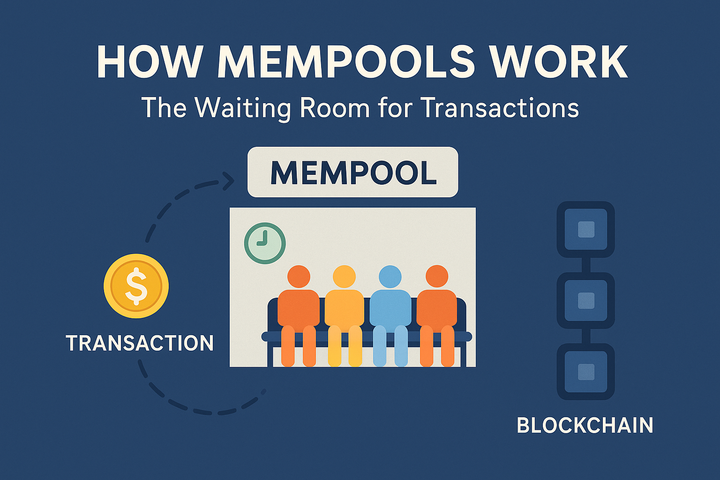Breaking DeFi’s Liquidity Trap: How Mitosis is Reshaping Capital Efficiency and Yield Access

The rapid evolution of Decentralized Finance (DeFi) has been revolutionary, enabling permissionless access to financial services that were once the domain of centralized institutions. However, beneath this innovation lies an unsolved liquidity crisis, a fundamental problem that prevents DeFi from reaching its full potential. Liquidity fragmentation, inefficiencies in price discovery, and capital instability have created barriers that make DeFi risky and unreliable for users and developers alike.
Liquidity, the lifeblood of any financial system, remains an under-optimized, fragmented, and opaque aspect of DeFi. The industry has witnessed rapid TVL (Total Value Locked) expansion, yet liquidity itself remains poorly allocated and difficult to utilize effectively. Large-scale liquidity providers (LPs) dominate access to high-yield opportunities, while smaller participants face information asymmetry, reduced returns, and unsustainable capital lock-ups.
Enter Mitosis, a groundbreaking protocol that redefines liquidity provisioning. By transforming illiquid LP positions into programmable financial instruments, Mitosis introduces miAssets and maAssets, revolutionizing how DeFi liquidity is managed, traded, and optimized. With its innovative network for programmable liquidity, Mitosis doesn't just address the DeFi liquidity crisis, it rewrites the rules entirely.
This article will explore why liquidity is DeFi’s biggest challenge, how Mitosis is fundamentally reshaping capital efficiency, and why its programmable liquidity model might be the most significant breakthrough in decentralized finance.
The Liquidity Crisis in DeFi: A Deeply Rooted Problem
Liquidity is not just about having enough capital locked in DeFi protocols; it’s about how that liquidity is structured, deployed, and utilized. The reality is that DeFi liquidity, despite its impressive TVL metrics, is highly inefficient. Here’s why:
1. Fragmented Liquidity Across Chains
DeFi is inherently multi-chain, with assets spread across Ethereum, BNB Chain, Solana, Avalanche, Polygon, and beyond. While this multichain expansion has enabled broader adoption, it has also fractured liquidity, making it difficult for traders and protocols to efficiently access deep pools of capital.
👉 Liquidity pools on different chains are isolated from each other. A user providing liquidity on Uniswap (Ethereum) cannot benefit from demand on PancakeSwap (BNB Chain).
👉 Cross-chain bridges introduce risks (hacks, delays, and inefficiencies).
👉 Liquidity providers must split funds across multiple protocols, reducing overall capital efficiency.
2. Lack of Fair Market Price Discovery
Unlike traditional finance, where liquidity has structured marketplaces and yield curves, DeFi liquidity is opaque and fragmented. This leads to:
👉 Information Asymmetry: Large LPs negotiate private, preferential yield deals, while smaller players operate with incomplete data and lower returns.
👉 Arbitrary APY Fluctuations: Incentives are temporary, causing TVL to shift unpredictably and harming the stability of DeFi protocols.
👉 Poor Capital Allocation: Capital isn’t being effectively utilized or priced based on risk-adjusted models.
3. Mercenary Liquidity and Unstable TVL
A persistent issue in DeFi is mercenary liquidity, a capital that chases the highest yield and then disappears when incentives dry up. This creates unstable liquidity markets where:
👉 Protocols compete through unsustainable reward mechanisms, attracting users only for short-term APY boosts.
👉 LPs withdraw funds as soon as incentives drop, leading to volatile TVL fluctuations.
👉 Protocols that rely on liquidity incentives fail to sustain long-term liquidity health.
This volatility harms lending protocols, AMMs, and other DeFi applications, making DeFi less trustworthy and practical for both institutional and retail participants.
Mitosis: A Bold Solution to the Liquidity Problem

Mitosis tackles these challenges head-on by introducing programmable liquidity, a transformative approach that turns static LP positions into dynamic, composable, and yield-generating assets. Through its innovative miAssets and maAssets, Mitosis ensures that capital is never locked away uselessly but can instead be strategically deployed across multiple DeFi applications. By enabling programmable liquidity, Mitosis makes capital work smarter. Instead of forcing LPs to leave their assets idle in liquidity pools, Mitosis tokenizes these positions, allowing them to be traded, lent, or used as collateral while still accruing rewards.
This introduces an entirely new financial model where liquidity itself becomes an asset class. Through miAssets and maAssets, users can transfer, rebalance, and optimize their liquidity positions without disrupting capital flows within DeFi protocols. This approach removes inefficiencies associated with fragmented liquidity and maximizes capital utility across multiple chains.
Additionally, Mitosis eliminates slippage and liquidity fragmentation by moving away from the traditional automated market maker (AMM) model. Instead of relying on liquidity pools that suffer from price slippage, Mitosis leverages a limit-order book system, ensuring zero-slippage trades, deeper liquidity pools, and more efficient price execution. By supporting cross-chain liquidity aggregation, Mitosis ensures that capital is not isolated to one network or DEX but instead flows seamlessly across multiple DeFi ecosystems.
Another game-changing aspect of Mitosis is its ability to democratize yield access. Historically, high-yield DeFi opportunities have been dominated by whales and institutional players, leaving smaller LPs with limited access to competitive returns.
Mitosis changes this by introducing Ecosystem-Owned Liquidity (EOL) governance, a collective liquidity model where participants pool assets to achieve institutional-level yield rates. This means that smaller LPs can benefit from the same high-yield opportunities as large-scale players, making DeFi more inclusive and equitable.
Beyond governance-driven liquidity, Mitosis also introduces curated liquidity campaigns via the Matrix framework, where LPs can commit capital to structured, time-bound yield programs. This prevents mercenary liquidity behavior by ensuring liquidity commitments are honored for predetermined periods, stabilizing TVL, and eliminating short-term capital flight.
Finally, Mitosis ensures that multi-chain liquidity is both efficient and accessible. Unlike other DeFi protocols that struggle with cross-chain liquidity balancing, Mitosis provides a fluid, scalable framework that allows liquidity to be dynamically reallocated based on real-time market demand. This prevents liquidity bottlenecks on certain chains while ensuring optimal capital distribution across the entire DeFi ecosystem.
Why Mitosis is More Than Just Another DeFi Protocol
Mitosis is not just a liquidity protocol, it's a fundamental infrastructure layer that could reshape the entire DeFi ecosystem. Unlike other platforms that merely offer better yields or lower fees, Mitosis is solving the structural issues that prevent DeFi from scaling sustainably. Here's how:
1. Liquidity Becomes a Fully-Utilized Asset Class
With Mitosis, LP positions are no longer locked, wasted, or underutilized—they are fluid, tokenized, and functional across multiple DeFi applications.
2. Multi-Chain Liquidity Becomes Efficient & Accessible
Instead of disconnected liquidity pools, Mitosis ensures that capital can be dynamically optimized across different chains and protocols.
3. Sustainable Yield, Not Just Temporary APYs
By eliminating mercenary liquidity and offering structured liquidity frameworks (EOL & Matrix), Mitosis builds long-term liquidity health, not just short-term farming incentives.
Final Thoughts: Is Mitosis the Future of DeFi Liquidity?
Liquidity remains one of the single biggest bottlenecks in DeFi, and without solving it, the ecosystem cannot scale effectively. Mitosis is not just another DeFi protocol, it’s an evolution in liquidity engineering. By making liquidity programmable, composable, and equitable, Mitosis is unlocking a future where DeFi can finally compete with traditional finance in efficiency, stability, and accessibility.
As DeFi continues to evolve, the industry must transition from fragmented, inefficient liquidity models to structured, programmable liquidity solutions. Mitosis isn’t just addressing temporary liquidity inefficiencies, it’s building an entirely new liquidity paradigm. If successful, it could set the gold standard for decentralized liquidity management, making DeFi safer, more profitable, and accessible to all market participants.
The question is no longer whether DeFi will solve its liquidity problems, the question is whether Mitosis is the solution. What do you think? Is programmable liquidity the missing piece for DeFi mass adoption?



Comments ()